People / OCNC2016
Lecturers / Brief Bio & Message to students
Claudia Clopath (Imperial College London, UK)
I am a Lecturer (equivalent to Assistant Professor) in the Bioengineering Department at Imperial College London, and head of the Computational Neuroscience Laboratory.
After having studied Physics at the EPFL, I did a PhD in Wulfram Gerstner's lab, a first postdoc with Nicolas Brunel, and a second postdoctoral research fellowship in the Center for Theoretical Neuroscience at Columbia University.
I am broadly interested in the field of neuroscience, especially insofar as it addresses the questions of learning and memory. I use mathematical and computational tools to model synaptic plasticity, and to study its functional implication in artificial neural networks.
Erik De Schutter (OIST)
 I have been teaching for more than 16 years at European CNS summer schools and was part of the last nine OCNCs. It is always exciting to meet the diverse groups of highly motivated young scientists attending our courses. Summer courses have an important function in teaching computational methods and approaches, and in establishing social networks among the participants. Ideally every neuroscientist, including experimentalists and clinicians, should attend a CNS course because computational methods have become essential tools to understand the complex systems we are studying. There is a broad range of modeling approaches available. I have specialized in data-driven, bottom-up methods that are more accessible to experimentalists because they are mainly parameter driven. This includes large compartmental models of neurons with active dendrites, networks with realistic connectivity using conductance based neuron models and stochastic reaction-diffusion models of molecular interactions. I will not have time to present much of our research, but feel free to ask me or my collaborators about our work! Most of the work in my lab concerns the cerebellum, including its main neuron the Purkinje cell.
I have been teaching for more than 16 years at European CNS summer schools and was part of the last nine OCNCs. It is always exciting to meet the diverse groups of highly motivated young scientists attending our courses. Summer courses have an important function in teaching computational methods and approaches, and in establishing social networks among the participants. Ideally every neuroscientist, including experimentalists and clinicians, should attend a CNS course because computational methods have become essential tools to understand the complex systems we are studying. There is a broad range of modeling approaches available. I have specialized in data-driven, bottom-up methods that are more accessible to experimentalists because they are mainly parameter driven. This includes large compartmental models of neurons with active dendrites, networks with realistic connectivity using conductance based neuron models and stochastic reaction-diffusion models of molecular interactions. I will not have time to present much of our research, but feel free to ask me or my collaborators about our work! Most of the work in my lab concerns the cerebellum, including its main neuron the Purkinje cell.
Kenji Doya (OIST)
Kenji Doya took BS in 1984, MS in 1986, and Ph.D. in 1991 at U. Tokyo. He became a research associate at U. Tokyo in 1986, U. C. San Diego in 1991, and Salk Institute in 1993. He joined ATR in 1994 and became the head of Computational Neurobiology Department, ATR Computational Neuroscience Laboratories in 2003. In 2004, he was appointed as the principal investigator of Neural Computation Unit, Okinawa Institute of Science and Technology (OIST) and started Okinawa Computational Neuroscience Course (OCNC) as the chief organizer. As OIST re-established itself as a graduate university in 2011, he became a professor and the vice provost for research. He serves as the co-editor in chief of Neural Networks from 2008. He is interested in understanding the functions of basal ganglia and neuromodulators based on the theory of reinforcement learning.
Chris Eliasmith (University of Waterloo, Canada)
 Chris Eliasmith is currently Director of the Centre for Theoretical Neuroscience at the University of Waterloo and holds a Canada Research Chair in Theoretical Neuroscience. He has authored or coauthored two books and over 90 publications in philosophy, psychology, neuroscience, computer science, and engineering. His book, 'How to build a brain' (Oxford, 2013), describes the Semantic Pointer Architecture for constructing large-scale brain models. His team built what is currently the world's largest functional brain model, 'Spaun', and the first to demonstrate realistic behaviour under biological constraints. This ground-breaking work was published in Science and has been featured by CNN, BBC, Der Spiegel, Popular Science, National Geographic and CBC among many other media outlets.
Chris Eliasmith is currently Director of the Centre for Theoretical Neuroscience at the University of Waterloo and holds a Canada Research Chair in Theoretical Neuroscience. He has authored or coauthored two books and over 90 publications in philosophy, psychology, neuroscience, computer science, and engineering. His book, 'How to build a brain' (Oxford, 2013), describes the Semantic Pointer Architecture for constructing large-scale brain models. His team built what is currently the world's largest functional brain model, 'Spaun', and the first to demonstrate realistic behaviour under biological constraints. This ground-breaking work was published in Science and has been featured by CNN, BBC, Der Spiegel, Popular Science, National Geographic and CBC among many other media outlets.
Dr. Eliasmith was awarded the NSERC Polayni Prize for most significant science and engineering contribution in Canada in 2015.
Tomoki Fukai (RIKEN BSI, Japan)
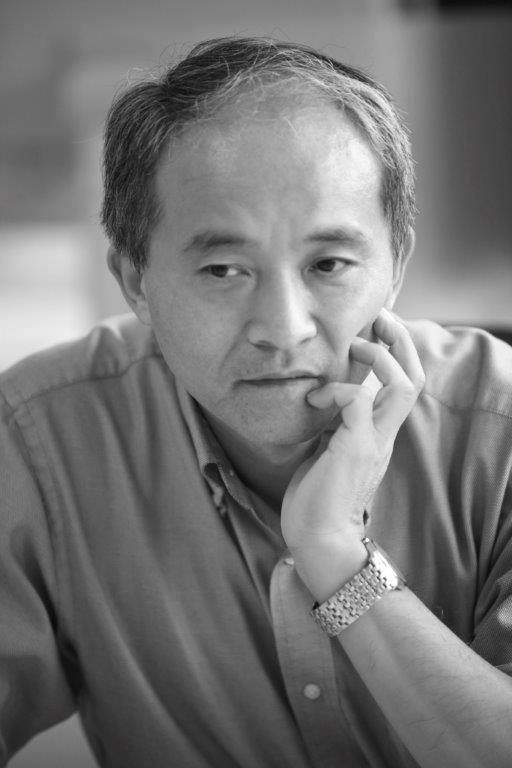 I received Ph.D in physics from Waseda University, Tokyo, in 1985. I was a visiting fellow of Theoretical Physics Group, Tata Institute from 1986 to 1988. I was appointed an associate professor of Tokai University in 1991, and then became a professor at Brain Research Center of Tamagawa University in 2001. In 2005, I moved to RIKEN Brain Science Institute as the director of Theoretical Neuroscience Group. Since 2010, I have been a Senior Team Leader of Laboratory for Neural Circuit Theory. I am also serving the University of Tokyo and Kyoto University as adjunct professors.
I received Ph.D in physics from Waseda University, Tokyo, in 1985. I was a visiting fellow of Theoretical Physics Group, Tata Institute from 1986 to 1988. I was appointed an associate professor of Tokai University in 1991, and then became a professor at Brain Research Center of Tamagawa University in 2001. In 2005, I moved to RIKEN Brain Science Institute as the director of Theoretical Neuroscience Group. Since 2010, I have been a Senior Team Leader of Laboratory for Neural Circuit Theory. I am also serving the University of Tokyo and Kyoto University as adjunct professors.
OCNC is an exciting experience for lecturers as well. I am looking forward to meeting the next generation leaders in computational brain sciences.
Michael Hausser (University College London, UK)
Etienne Koechlin (Ecole Normale Superieure, France)
Bernd Kuhn (OIST)
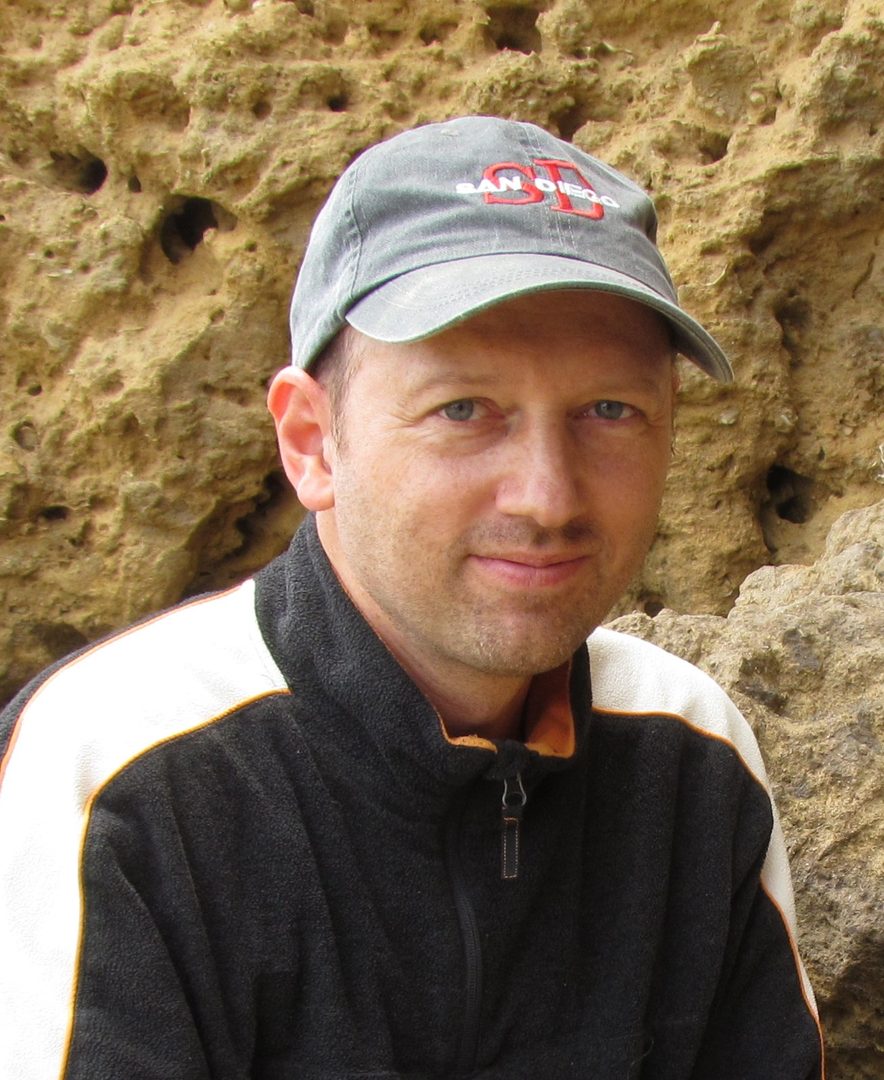 I studied physics at the University of Ulm, Germany. For my diploma and PhD I moved to the Max Planck Institute of Biochemistry, Martinsried, Germany, focusing on the development of novel voltage-sensitive dyes and their application in cultured neurons. To optimize voltage imaging and to use voltage-sensitive dyes with two-photon excitation I accepted a postdoctoral fellowship at the Max Planck Institute for Medical Research, Heidelberg, Germany. In my second postdoc position at Princeton University, NJ, USA, I made viral vectors delivering the gene of calcium indicators and used them for in vivo imaging in the cerebellum. Additionally, I used voltage-sensitive dyes for in vivo two-photon imaging in barrel cortex of the mouse. Since 2010 I work at OIST (Optical Neuroimaging Unit). We mainly work on in vivo voltage and calcium two-photon imaging and methods development for neuroscience.
I studied physics at the University of Ulm, Germany. For my diploma and PhD I moved to the Max Planck Institute of Biochemistry, Martinsried, Germany, focusing on the development of novel voltage-sensitive dyes and their application in cultured neurons. To optimize voltage imaging and to use voltage-sensitive dyes with two-photon excitation I accepted a postdoctoral fellowship at the Max Planck Institute for Medical Research, Heidelberg, Germany. In my second postdoc position at Princeton University, NJ, USA, I made viral vectors delivering the gene of calcium indicators and used them for in vivo imaging in the cerebellum. Additionally, I used voltage-sensitive dyes for in vivo two-photon imaging in barrel cortex of the mouse. Since 2010 I work at OIST (Optical Neuroimaging Unit). We mainly work on in vivo voltage and calcium two-photon imaging and methods development for neuroscience.
Stefan Mihalas (Allen Institute for Brain Science, USA)
I have a background in physics and mathematics and I am currently an Assistant Investigator at the Allen Institute for Brain Science. My research focuses on uncovering the computations implemented by microcircuits in the mouse visual cortex, how they depend on the myriad of types of neurons, synapses and connection structures involved, and how do these computational units give rise to the observed system wide behaviors. The strategy is starting with simple models and adding complexity as required by the computations which are needed by the system.
In this lecture I will focus on the coarsest level of resolution in our models, in which populations of neurons which respond similarly are treated as a homogeneous population. While it might be surprising, models which can be as simple can reproduce a wide diversity of phenomena, starting between interactions between a small number of populations, to full dynamical description of the input-output of a cortical column. All the software and the examples which will be used can be downloaded from: http://alleninstitute.github.io/dipde/
Partha Mitra (Cold Spring Harbor, USA)
 Partha Mitra (PhD Harvard 1993, Theoretical Physics) is Crick-Clay Professor of Biomathematics at Cold Spring Harbor Laboratory. He was an Assistant Professor of Physics at Caltech (1996) and a member of Theoretical Physics department at Bell Laboratories (1993-2003). Dr Mitra is H N Mahabala distinguished chair in Computational Brain Research (visiting) at IIT Madras, India and Senior Visiting Researcher at RIKEN Brain Science Institute, Japan. His research combines experimental, theoretical and informatics approaches to gain an understanding of how brains work. He originated the idea to study neuronal circuits brain-wide at the mesoscopic scale, and is carrying out this task in the Mouse and in the Marmoset. Dr Mitra is a Fellow of the American Physical Society.
Partha Mitra (PhD Harvard 1993, Theoretical Physics) is Crick-Clay Professor of Biomathematics at Cold Spring Harbor Laboratory. He was an Assistant Professor of Physics at Caltech (1996) and a member of Theoretical Physics department at Bell Laboratories (1993-2003). Dr Mitra is H N Mahabala distinguished chair in Computational Brain Research (visiting) at IIT Madras, India and Senior Visiting Researcher at RIKEN Brain Science Institute, Japan. His research combines experimental, theoretical and informatics approaches to gain an understanding of how brains work. He originated the idea to study neuronal circuits brain-wide at the mesoscopic scale, and is carrying out this task in the Mouse and in the Marmoset. Dr Mitra is a Fellow of the American Physical Society.
Shinji Nishimoto (CiNet, Japan)
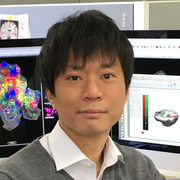 Shinji Nishimoto received his Ph.D. in neurophysiology from Osaka University in 2005 (supervisor: Prof. Izumi Ohzawa). He worked as a postdoctoral fellow at the University of California, Berkeley from 2005 to 2013 (supervisor: Prof. Jack L. Gallant). Then, he joined the Center for Information and Neural Networks (CiNet) at the National Institute of Information and Communications Technology as a senior researcher (principal investigator). He has also been affiliated with Osaka University Graduate School of Medicine and Frontier Biosciences. His primary research interest is the quantitative understanding of neural information processing and representation.
Shinji Nishimoto received his Ph.D. in neurophysiology from Osaka University in 2005 (supervisor: Prof. Izumi Ohzawa). He worked as a postdoctoral fellow at the University of California, Berkeley from 2005 to 2013 (supervisor: Prof. Jack L. Gallant). Then, he joined the Center for Information and Neural Networks (CiNet) at the National Institute of Information and Communications Technology as a senior researcher (principal investigator). He has also been affiliated with Osaka University Graduate School of Medicine and Frontier Biosciences. His primary research interest is the quantitative understanding of neural information processing and representation.
Astrid Prinz (Emory University, USA)
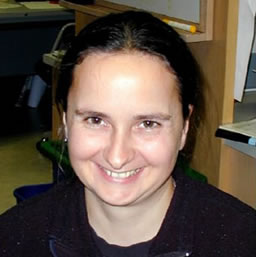 I received my PhD in physics from Munich Technical University in 2000 for my work on signal propagation in geometrically simple networks of cultured neurons. After a postdoctoral fellowship in the lab of Eve Marder at Brandeis University, during which I combined experimental and computational techniques to study synchronization phenomena, variability, and robustness in pattern-generating networks. In 2005 I joined the faculty in the Department of Biology at Emory University, where I am now an Associate Professor. My lab is interested in synchronization, homeostasis, and plasticity in neuronal circuits. Over the last 10 or so years I have taught at a variety of summer courses nearly every year, and I enjoy the interactions with students. I am looking forward to meeting you all!
I received my PhD in physics from Munich Technical University in 2000 for my work on signal propagation in geometrically simple networks of cultured neurons. After a postdoctoral fellowship in the lab of Eve Marder at Brandeis University, during which I combined experimental and computational techniques to study synchronization phenomena, variability, and robustness in pattern-generating networks. In 2005 I joined the faculty in the Department of Biology at Emory University, where I am now an Associate Professor. My lab is interested in synchronization, homeostasis, and plasticity in neuronal circuits. Over the last 10 or so years I have taught at a variety of summer courses nearly every year, and I enjoy the interactions with students. I am looking forward to meeting you all!
John Rinzel (New York University, USA)
 My research is on the biophysical mechanisms and theoretical foundations of dynamic neural computation. With a background in engineering (BS: U of FL, 1967) and applied mathematics (PhD: NYU, 1973) I develop and use computational models to understand how neurons and neural circuits generate and communicate with electrical and chemical signals for neural processing and computation. Our lab uses concepts from nonlinear dynamics and simulations with more or less idealized models to interpret and predict electrophysiological and psychophysical results from our experiments and those of colleagues. Before joining New York University’s faculty (with joint appointments in the Center for Neural Science and the Courant Institute of Mathematical Sciences) in 1997, I was in and headed the Mathematical Research Branch at the NIH.
My research is on the biophysical mechanisms and theoretical foundations of dynamic neural computation. With a background in engineering (BS: U of FL, 1967) and applied mathematics (PhD: NYU, 1973) I develop and use computational models to understand how neurons and neural circuits generate and communicate with electrical and chemical signals for neural processing and computation. Our lab uses concepts from nonlinear dynamics and simulations with more or less idealized models to interpret and predict electrophysiological and psychophysical results from our experiments and those of colleagues. Before joining New York University’s faculty (with joint appointments in the Center for Neural Science and the Courant Institute of Mathematical Sciences) in 1997, I was in and headed the Mathematical Research Branch at the NIH.
Greg Stephens (OIST)
 My research in theoretical biophysics is focused on the interface of physics and biology, broadly defined, and I explore a diverse set of problems ranging from the behavior of small organisms to the natural dynamics of human cognition. In all of my efforts I combine cross-disciplinary experimental collaborations with ideas drawn broadly from such areas as statistical physics, dynamical systems and information theory to seek unifying principles and simple, functional understanding in living systems. Trained in quantum gravity and early universe cosmology, as I switched focus, I was fortunate to experience a course such as this one and I hope that you will enjoy a similarly remarkable experience.
My research in theoretical biophysics is focused on the interface of physics and biology, broadly defined, and I explore a diverse set of problems ranging from the behavior of small organisms to the natural dynamics of human cognition. In all of my efforts I combine cross-disciplinary experimental collaborations with ideas drawn broadly from such areas as statistical physics, dynamical systems and information theory to seek unifying principles and simple, functional understanding in living systems. Trained in quantum gravity and early universe cosmology, as I switched focus, I was fortunate to experience a course such as this one and I hope that you will enjoy a similarly remarkable experience.
Yoko Yazaki-Sugiyama (OIST)
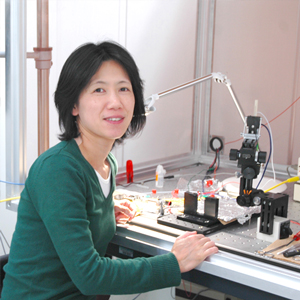 My research interest is to understand the brain function which allows animal to behave properly. Our research unit currently working on the neuronal mechanism of the developmental ‘critical period’ where the neurons are plastic and actively shaping their network by using bird song learning. Why do birds learn to sing only in the limited time window ? We are exploring the mystery of birds’ brain to answer the questions.
My research interest is to understand the brain function which allows animal to behave properly. Our research unit currently working on the neuronal mechanism of the developmental ‘critical period’ where the neurons are plastic and actively shaping their network by using bird song learning. Why do birds learn to sing only in the limited time window ? We are exploring the mystery of birds’ brain to answer the questions.
Tutors / About yourself & Message
Romain Cazè (Imperial College London, UK)

In a few words, I will try to share my enthusiasm, introduce myself, my questions, and the things I like to think about. My PhD focused on the role of dendrites in single neuron computation. I was fortunate to have Boris Gutkin as supervisor and to stumble upon a discovery during my thesis. I discovered something about dendrites -which collect inputs to a neuron- and this discovery is forcing us to alter our view on the computational capacity of a
single neuron. I showed that, even when they are modelled as passive comparments, dendrites enable neurons to compute linearly non-separable functions (on top of the existing capacity of neurons to already compute non-linear functions like the logic AND. (Yes, I know non-linearly separable functions and non-linear functions are different sets of functions!) However, I am not yet satisfied, and many questions remain. I have a realistic outlook: neither my post-doc in London with Simon Schultz nor my future career in research will be enough to answer these questions. How does our brain store memories? (please do not answer synaptic plasticity). Where does our creativity come from? These are two questions near to my heart. This is maybe why I love doing science. Because I love asking questions, sometimes even more than answering them. So be aware that I will inspect your hidden assumptions and will discuss about them around machines that can distribute beer. With that being said, I am looking forward to meet you all in Okinawa,
---
Expertise: Python /NEURON / Brian / RL
Tom Close (Monash University, Melbourne, Australia)
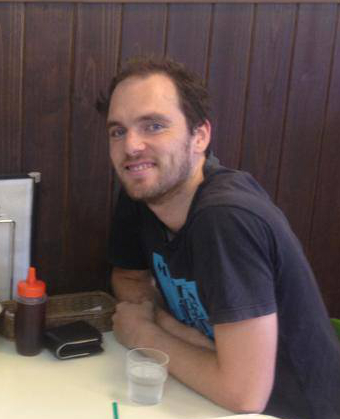 Welcome to Okinawa everyone! I am interested in how, in many cases, we are able to respond to complex dynamics in our environments more elegantly than custom-built robotics despite typically longer transmission delays and less powerful motors (i.e. muscles). This has led me to construct detailed models of cerebellar networks in order to help understand how some of the dynamics we encounter are represented in their distinct cellular mechanisms and network structures.
Welcome to Okinawa everyone! I am interested in how, in many cases, we are able to respond to complex dynamics in our environments more elegantly than custom-built robotics despite typically longer transmission delays and less powerful motors (i.e. muscles). This has led me to construct detailed models of cerebellar networks in order to help understand how some of the dynamics we encounter are represented in their distinct cellular mechanisms and network structures.
---
Scientific interests:
I am interested in how the central nervous system represents and interacts with the dynamics of its environment (internal and external to the body), and in particular the role played by the cerebellum. However, in the process of building biophysically detailed models of the cerebellar network I have become heavily involved in the development of NineML (a model description language for neuroscience) and associated software tools in order to robustly manage the complexity of such models.
Scientific expertise:
- Formalising common features of neuronal/network simulations into a model description language for neuroscience (http://nineml.net)
- Automated reduction of large multi-compartmental models by incremental retuning with evolutionary algorithms (http://www.biomedcentral.com/1471-2202/15/S1/P178)
- Bayesian inference of white matter tracts from diffusion MRI using MCMC sampling methods.
Software expertise:
Python, C/C++, MATLAB, NEURON, NEST, MPI, Git
Espen Hagen (Julich Research Center, Germany)
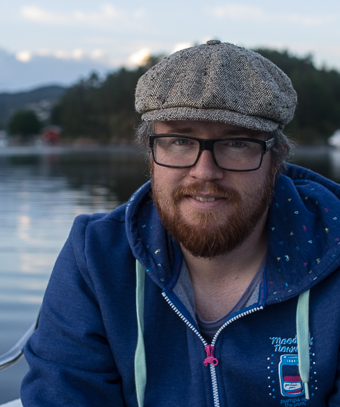 I am at present a PostDoc in the group of Markus Diesmann at the Institute of Neuroscience and Medicine (INM-6), Juelich Research Centre in Germany. I finished up my PhD at the Norwegian University of Life Sciences in 2014 under the supervision of Gaute Einevoll. There, I worked on several modeling projects relating neuronal activity to extracellularly recorded potentials (e.g., spikes and local field potentials (LFP)). The key components in these efforts were multicompartment models at various level of detail combined with electrostatic forward modeling. We have for example used such models to produce benchmarking data for evaluation of inverse current-source density (iCSD) estimation methods and automated spike sorting algorithms, as well as explaining features of extracellularly recorded potentials shaped by the cable-filtering properties of dendrites. At INM-6 I am involved in the development of large-scale point-neuron network models incorporating electrophysiological and anatomical data, however the relation between ongoing network activity and easy-to-measure population signals such as the LFP is nontrivial. Thus, I am developing biophysics-based methods relying on LFPy (http://LFPy.github.io) to compute LFPs (and by extension ECoG, EEG signals) applicable with randomly connected point-neuron networks as well as networks incorporating spatial features (i.e., distance-dependent connectivity).
I am at present a PostDoc in the group of Markus Diesmann at the Institute of Neuroscience and Medicine (INM-6), Juelich Research Centre in Germany. I finished up my PhD at the Norwegian University of Life Sciences in 2014 under the supervision of Gaute Einevoll. There, I worked on several modeling projects relating neuronal activity to extracellularly recorded potentials (e.g., spikes and local field potentials (LFP)). The key components in these efforts were multicompartment models at various level of detail combined with electrostatic forward modeling. We have for example used such models to produce benchmarking data for evaluation of inverse current-source density (iCSD) estimation methods and automated spike sorting algorithms, as well as explaining features of extracellularly recorded potentials shaped by the cable-filtering properties of dendrites. At INM-6 I am involved in the development of large-scale point-neuron network models incorporating electrophysiological and anatomical data, however the relation between ongoing network activity and easy-to-measure population signals such as the LFP is nontrivial. Thus, I am developing biophysics-based methods relying on LFPy (http://LFPy.github.io) to compute LFPs (and by extension ECoG, EEG signals) applicable with randomly connected point-neuron networks as well as networks incorporating spatial features (i.e., distance-dependent connectivity).
-----
I am a regular user of point neuron network models, multicompartment neuron models, electrostatic forward models and high-performance computing (HPC) facilities.
Publications:
Hagen E, Dahmen D, Stavrinou ML, Lindén H, Tetzlaff T, van Albada SJ, Grün S, Diesmann M, Einevoll GT (2016).
Hybrid scheme for modeling local field potentials from point-neuron networks. arXiv:1511.01681 [q-bio.NC]
Hagen E, Ness TV, Khosrowshahi A, Sørensen C, Fyhn M, Hafting T, Franke F, Einevoll GT (2015).
ViSAPy: A Python tool for biophysics-based generation of virtual spiking activity for evaluation of spike-sorting algorithms. J Neurosci Methods 245:182-204 Lindén H, Hagen E, Łęski S, Norheim E S, Pettersen KH, Einevoll GT (2014).
LFPy: a tool for biophysical simulation of extracellular potentials generated by detailed model neurons. Front Neuroinform 16(7):41 Hagen E (2014)
Modeling of extracellular potentials from cortical neural activity. PhD thesis Einevoll GT, Franke F, Hagen E, Pouzat C, Harris K (2012)
Towards reliable spike-train recordings from thousands of neurons with multielectrodes. Curr Opin Neurobiol. 22(1): 11–17.
Franke F, Natora M, Meier P, Hagen E, Pettersen K H, Lindén H, Einevoll G T, Obermayer K (2010)
An automated online positioning system and simulation environment for multi-electrodes in extracellular recordings. Engineering in Medicine and Biology Society (EMBC), 2010 Annual International Conference of the IEEE.
Pettersen KH, Hagen E, Einevoll GT (2008). Estimation of population firing rates and current source densities from laminar electrode recordings. J
Comput Neurosci 24(3):291-313.
Software/tools:
NEST, NEURON, Python, SciPy stack, LFPy, iCSD, MPI, HPC facilities, Git
Akihiro Funamizu (OIST)
Welcome to Okinawa!!
I am interested in the brain mechanism of decision making. I am currently working on the modeling of rodents behaviors or neural circuits with reinforcement learning and Bayesian theorem. I have an experience of extra-cellular recording and two-photon microscopy in awake behaving mice.
---
Scientific interests:
Decision making, Perceptual learning, Neural implementation of machine learning (e.g., reinforcement learning or Bayesian theorem)
Paper:
Funamizu A. et al., Eur J Neurosci, Vol.35(7), pp.1180-1189, 2012.
Scientific expertise:
Reinforcement learning and Bayesian theorem. These algorithms are used to model the behaviors of humans and animals.Making a behavioral task from a machine-learning point of view
Expert of brain areas:
Auditory cortex, Parietal cortex, Basal Ganglia circuit.
Neuroscience topics:
Two-photon microscopy, Extra-cellular recording
Software expertise:
Matlab
Andrew Gallimore (OIST)
 I am a neurobiologist, biochemist, and pharmacologist, currently working in Erik DeSchutter's computational neuroscience group at OIST. At the molecular level, I am interested in the emergent properties of complex networks of intracellular molecules inside neurons. Specifically, I work on the mechanisms underlying synaptic plasticity in the cerebellum. I am also deeply interested in how psychoactive molecules (psychedelic drugs in particular) affect global brain function and consciousness.
I am a neurobiologist, biochemist, and pharmacologist, currently working in Erik DeSchutter's computational neuroscience group at OIST. At the molecular level, I am interested in the emergent properties of complex networks of intracellular molecules inside neurons. Specifically, I work on the mechanisms underlying synaptic plasticity in the cerebellum. I am also deeply interested in how psychoactive molecules (psychedelic drugs in particular) affect global brain function and consciousness.
---
Expertise:
- Molecular neurobiology, pharmacology
- STEPS
- Matlab (esp. SimBiology)
Sungho Hong (OIST)
 I am a researcher in the Erik De Schutter's lab at OIST, and so I live and work in Okinawa. I am generally interested in things in the domain of biophysics/cellular physiology, and have been trying to understand how they contribute to what is happening in the higher level such as neural networks and so on. I look forward to meeting you all soon!
I am a researcher in the Erik De Schutter's lab at OIST, and so I live and work in Okinawa. I am generally interested in things in the domain of biophysics/cellular physiology, and have been trying to understand how they contribute to what is happening in the higher level such as neural networks and so on. I look forward to meeting you all soon!
---
I have expertise in detailed modeling of neurons with ion channels and intracellular ion dynamics, mainly in the NEURON platform. I also have some experience in developing data analysis techniques by using various statistical modeling frameworks such as LN model, compressive sensing, spectral clustering, and so on. The brain region that I am mostly familiar with is the cerebellar cortex. About computational tools, I write my simulations mostly in NEURON, and do my data analysis in Python and Matlab.
Adam Ponzi (OIST)
Hi, I am originally British but have been in Japan a long time since doing my Ph.D in physics in Tokyo. I work at OIST on modeling of network dynamics, chaos and cell assemblies, applied mainly to striatum but also cortex. I am looking forward to the customary crazy karaoke party above all.
Example papers :
http://journals.plos.org/ploscompbiol/article?id=10.1371/journal.pcbi.1002954
http://m.jneurosci.org/content/30/17/5894.abstract
---
Expertise:
Networks, dynamical systems and stochastic processes applied to modeling of cognitive brain function. Numerical analysis and simulation techniques
Martin Spencer (Vision Institute, Paris, France)
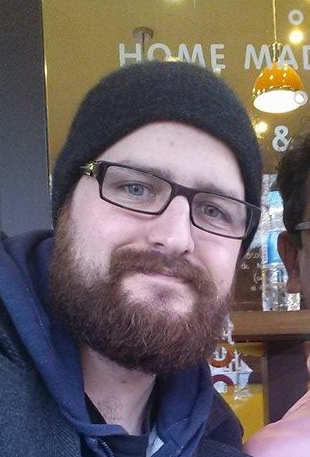 I am interested in sensory information representation in models of individual neurons and small networks of neurons. I have completed research in 'octopus cell's' that in mammals receive input from the auditory nerve and entrain to clicks and glottal pulses in speech. I have also been involved in research into binaural hearing. I am currently undertaking research in the classification of cells in the auditory brainstem, as well as the filtering properties of auditory brainstem cells.
I am interested in sensory information representation in models of individual neurons and small networks of neurons. I have completed research in 'octopus cell's' that in mammals receive input from the auditory nerve and entrain to clicks and glottal pulses in speech. I have also been involved in research into binaural hearing. I am currently undertaking research in the classification of cells in the auditory brainstem, as well as the filtering properties of auditory brainstem cells.
---
I have completed research in computational neuroscience using Neuron, Matlab, and Python. My main expertise is in Matlab, and Python.
I have mainly focused on:
1. Hodgkin-Huxley models with a small number of compartments, and Leaky Integrate-and-Fire models.
2. Small feed-forward networks of individual leaky integrate and fire neurons.
3. Sensory information representation in the auditory brainstem.
Merav Stern (Technion, Haifa, Israel)
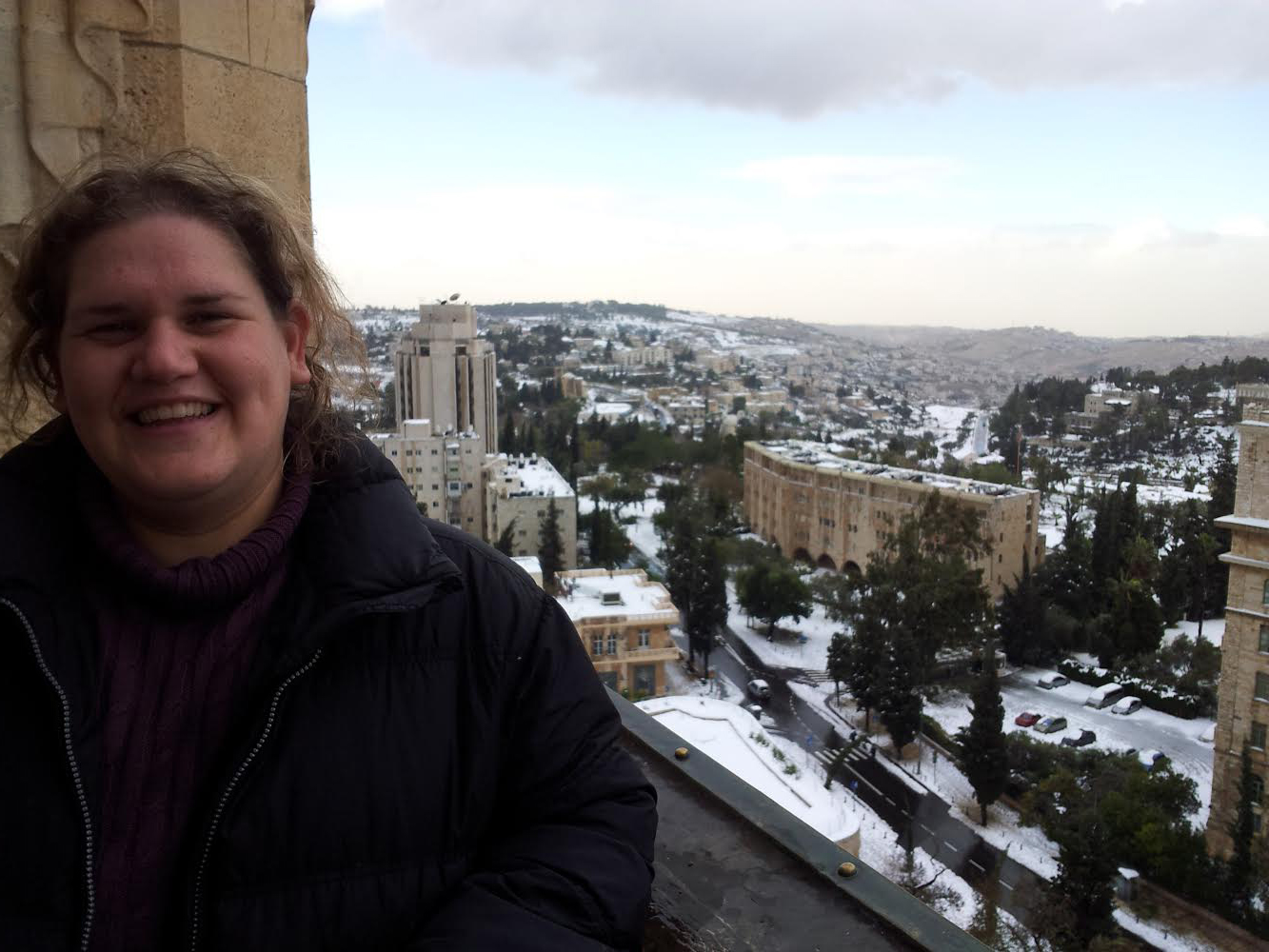 I grew up in a small town outside of Tel Aviv. My first tutor-like experience was in my teenage years as a figure skating instructor. Scientifically, I grew up at the Hebrew University, where I graduate with a Bachelor in Math and Physics, Master in theoretical physics and PhD in computational neuroscience. I also saw the world, I took my classes for my Master in Amsterdam, where I lived for a year, and did part of my PhD research in Columbia university in NY where I lived for three years. Currently, I'm a Postdoc.
I grew up in a small town outside of Tel Aviv. My first tutor-like experience was in my teenage years as a figure skating instructor. Scientifically, I grew up at the Hebrew University, where I graduate with a Bachelor in Math and Physics, Master in theoretical physics and PhD in computational neuroscience. I also saw the world, I took my classes for my Master in Amsterdam, where I lived for a year, and did part of my PhD research in Columbia university in NY where I lived for three years. Currently, I'm a Postdoc.
---
During my PhD I improved our tools for studying non linear neural network dynamics. Specifically, I explored static and dynamic mean field solutions of rate neural network that include strong self coupled units. I also studied a network including sub-groups of connectivity rules. This study has lead to new results in random matrix theory. In addition I have constructed for the pirifom cortex. The model captures basic circuit properties of piriform cortex and succeeds in explaining how concentration-dependent, temporal odor responses in the olfactory bulb are transformed into a concentration-invariant neuronal ensemble identity code in the piriform cortex. I also developed models for the olivo-cerebellar loop including how inputs affect the firing rate of purkinje cells and gap-junction inspired voltage rate networks.
Hiromichi Tsukada (OIST)
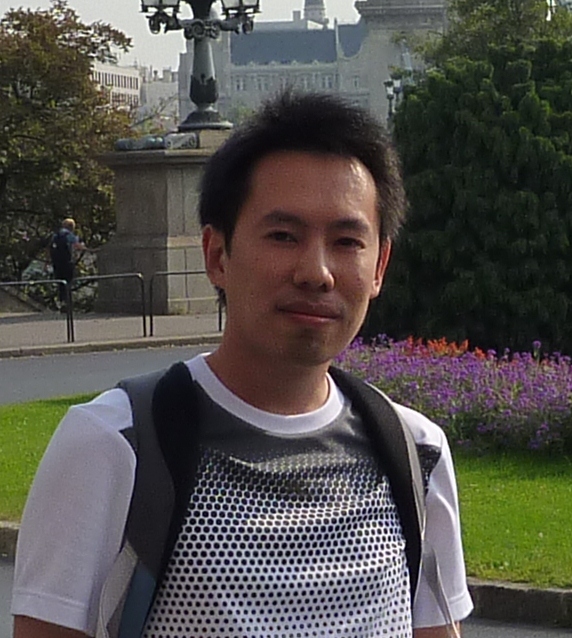 I am a Postdoc in the Doya unit at OIST. My background is neural network modeling with neural oscillation and memory processing, and its application to diseases. I am currently working on the whole brain network modeling based on the connectivity derived from diffusion MRI data and compare that with the brain activity data from functional MRI. My interest is to understand the relationship between functional networks and information representation, especially from the viewpoint of the dynamic aspects of neural networks. I am looking forward to seeing you in Okinawa.
I am a Postdoc in the Doya unit at OIST. My background is neural network modeling with neural oscillation and memory processing, and its application to diseases. I am currently working on the whole brain network modeling based on the connectivity derived from diffusion MRI data and compare that with the brain activity data from functional MRI. My interest is to understand the relationship between functional networks and information representation, especially from the viewpoint of the dynamic aspects of neural networks. I am looking forward to seeing you in Okinawa.
---
Expertise:
Neural network model, recurrent network, neural oscillation, learning and memory
Yunliang Zang (OIST)
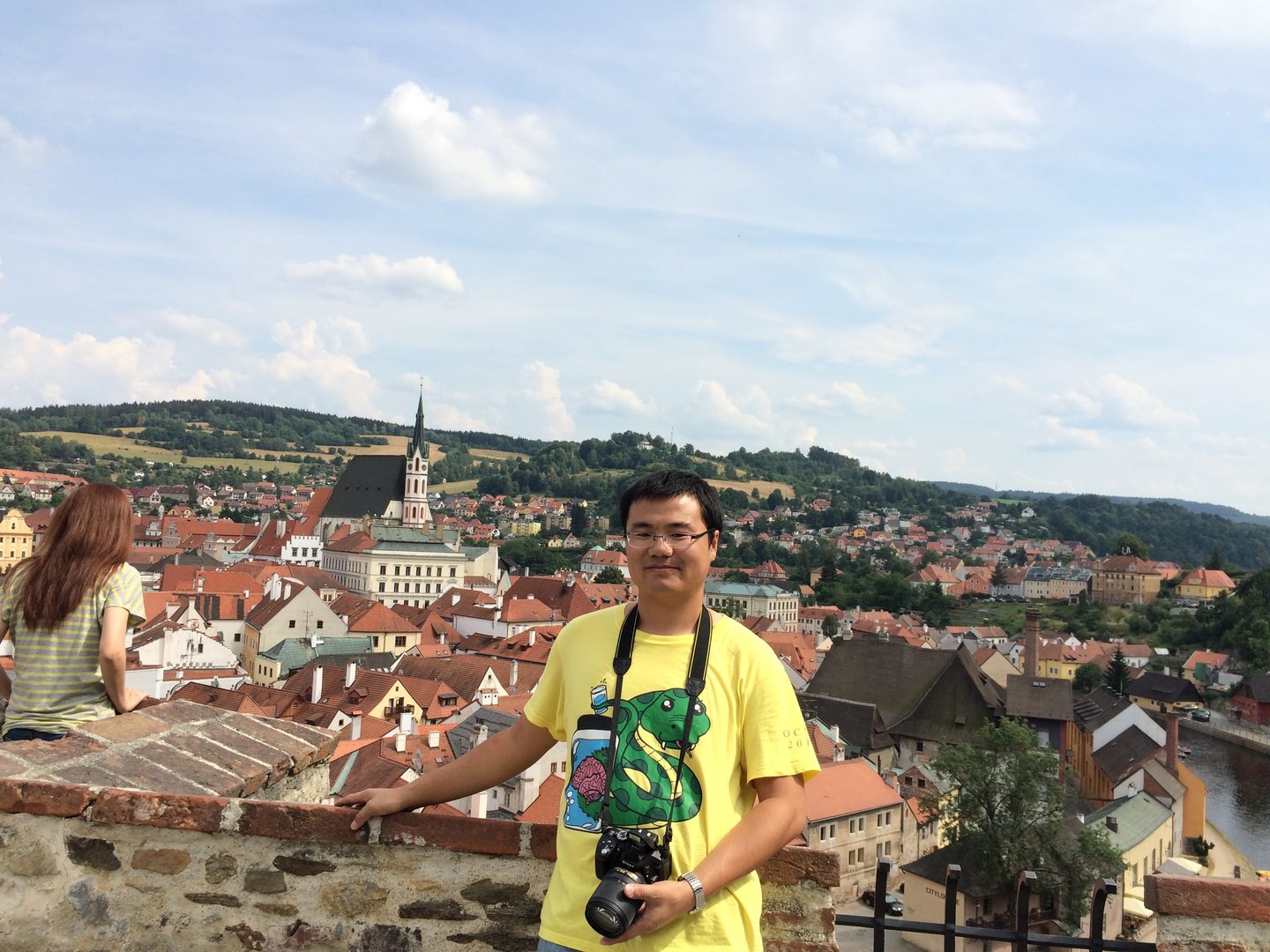 I am a postoc working in Erik De Schutter's lab at OIST. During my phd study, I explored the ionic mechanism of some heart diseases like Heart failure (HF) by build theoretical models. Two years ago I joined Erik's group and began to work on the Purkinje cell modelling. I explore the the role of principal ion currents in the generation of Na spikes in the soma and calcium spikes in the dendrite.
I am a postoc working in Erik De Schutter's lab at OIST. During my phd study, I explored the ionic mechanism of some heart diseases like Heart failure (HF) by build theoretical models. Two years ago I joined Erik's group and began to work on the Purkinje cell modelling. I explore the the role of principal ion currents in the generation of Na spikes in the soma and calcium spikes in the dendrite.
---
During my phd study, I used MATLAB and FORTRAN to do cell and tissue level modelling. I also have some experience in COMSOL and ADINA.
Recently, I mainly use NEURON and MATLAB to do the PC modelling and simulation.
Participants / About yourself & Message
Beth Baribault
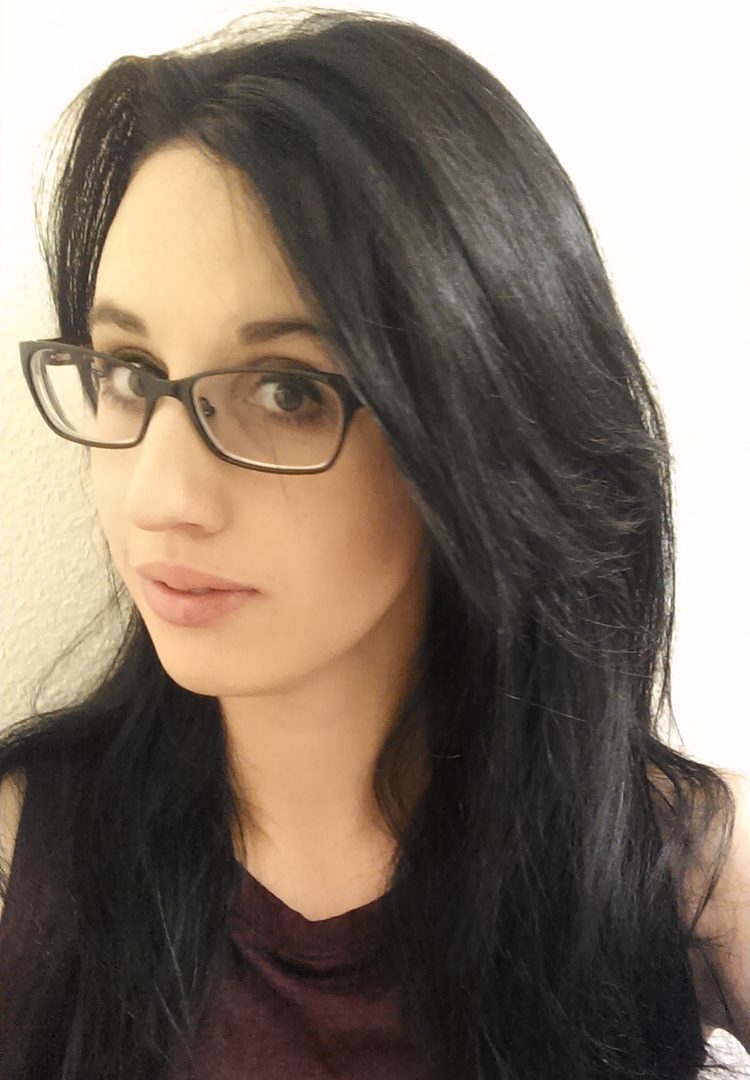 Affiliation:University of California, Irvine
Affiliation:University of California, Irvine- Position:PhD student
I'm a Cognitive Sciences PhD student at the University of California, Irvine. The focus of my graduate work to date has been the development of new approaches in Bayesian cognitive modeling. Recently, I've been working on joint models of behavioral and neural data. At OCNC, I'd like to simultaneously implement a cognitive model of behavioral data and a neural model of spike train data. My goal is to improve methods of neural decoding by incorporating cognitive modeling techniques.
Omer Barkai
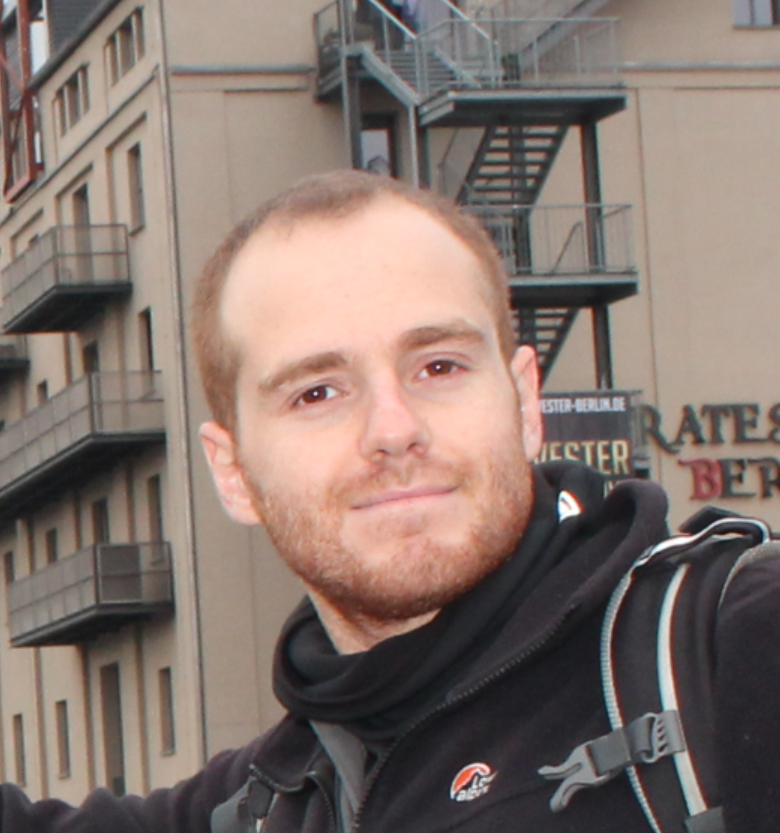 Affiliation:Hebrew University of Jerusalem, Israel
Affiliation:Hebrew University of Jerusalem, Israel- Position:PhD student
I am a PhD student at Alex Binshtok's lab at the Hebrew University in Israel with a background in physics and biology.
Our lab studies the “behavior” of pain-specific neuronal cells in cultures, brain slices and in- vivo. I use behavior tests, patch clamp and ion imaging techniques to characterize electrogenic properties in detection and transmission of pain and its treatment.
Very excited to meet and work with all of you in Okinawa!
Rachel Bedder
 Affiliation:University College London
Affiliation:University College London- Position:Masters Student
MSc student in Cognitive Neuroscience and Research Assistant in dementia at UCL. I have been working on auto-associative neural networks since October 2015 with Neil Burgess in the Science and Memory Laboratory. Previously I have worked with Eugene McSorley in the Active Vision Laboratory, University of Reading on eye-tracking and top-down/bottom-up visual perception. I come from a multi-disciplinary background and run an art and science public engagement company, AXNS Collective. I am looking to work on drift diffusion modelling at OCNC.
Tom Burns
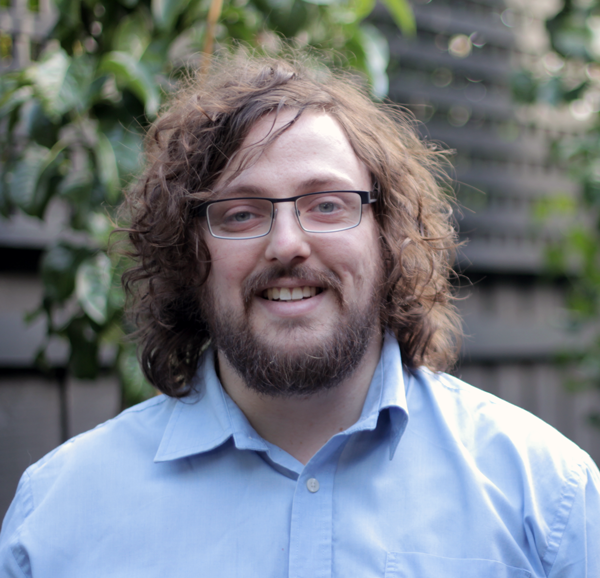 Affiliation:Monash University
Affiliation:Monash University- Position:PhD candidate
I am a PhD student in the Department of Physiology at Monash University in Melbourne, Australia. I am currently interested in analysing and modelling electrophysiological signals, especially local field potentials, from sensory cortex in different animals models. In my spare time I like to listen to jazz music and play the double bass. I look forward to participating in OCNC with you and learning exciting, new things about computational neuroscience!
François Cinotti
 Affiliation:Université Pierre et Marie Curie - Institut des Systèmes Intelligents et de Robotique
Affiliation:Université Pierre et Marie Curie - Institut des Systèmes Intelligents et de Robotique- Position:PhD student
Hi, my name is François Cinotti and I am a PhD student from the Université Pierre et Marie Curie in Paris. I have just started my PhD and am working on computational models of the role of dopamine in learning and decision-making in rats. I have a general background in biology, and specialized only recently in cognitive sciences, which means I still have a lot to learn and am eagerly looking forward to doing so.
Vivian Eng
- Affiliation:University of Nottingham Malaysia Campus
- Position:Graduate student
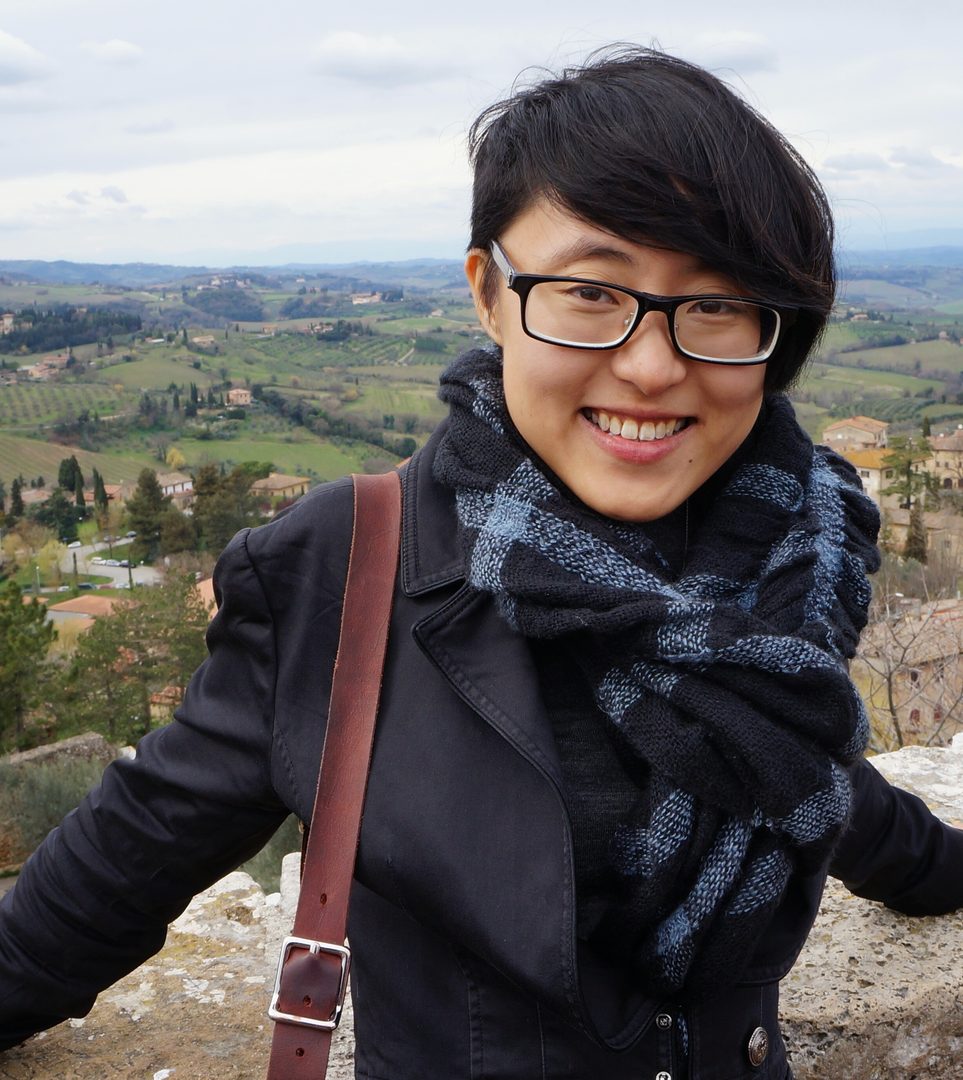 I combine eye-tracking and EEG with behavioural measures in experiments involving human participants to investigate inhibition of return, a novelty seeking mechanism that could serve as a foraging facilitator. My research interest fall under the general umbrella of visual attention, mainly focusing on how we selectively inhibit recently attended locations. I’m only just getting my feet wet in computational models of this phenomena and easily procrastinate on academic writing by tinkering with codes. I also enjoy swapping travel stories and meeting new people!
I combine eye-tracking and EEG with behavioural measures in experiments involving human participants to investigate inhibition of return, a novelty seeking mechanism that could serve as a foraging facilitator. My research interest fall under the general umbrella of visual attention, mainly focusing on how we selectively inhibit recently attended locations. I’m only just getting my feet wet in computational models of this phenomena and easily procrastinate on academic writing by tinkering with codes. I also enjoy swapping travel stories and meeting new people!
Zahra Ghasemi Esfahani
 Affiliation:Institute for Research in Fundamental Sciences
Affiliation:Institute for Research in Fundamental Sciences- Position:Postdoc Associate
Currently I am a postdoc associate at the School of Cognitive Science, Institute for Research in Fundamental Sciences in Iran and I am physicist by background. My Current research direction focuses on theoretical and computational study of cell assemblies in neuronal networks and modifying the neuronal models that describe the integration of evidence in a decision-making processes. My doctoral thesis dissertation focused on investigation of stable synchronous states in neuronal networks in presence of delay and inhomogeneity. In the Buzsaki lab at New York University, I analyzed causality between LFPs in different regions of Hippocampus, using both simulated data and in vivo electrophysiological recordings from behaving animals. At the Neurotheory Center of Columbia University, I studied irregular/asynchronous patterns in gamma rhythms in visual cortex. More precisely, I have tested the idea of supersaturation of neuronal response for high contrast visual stimuli in spiking networks. My earlier fields of study in M.Sc. and B.Sc. were “Dynamical Systems” and “Complex Networks”.
Maureen Hagan
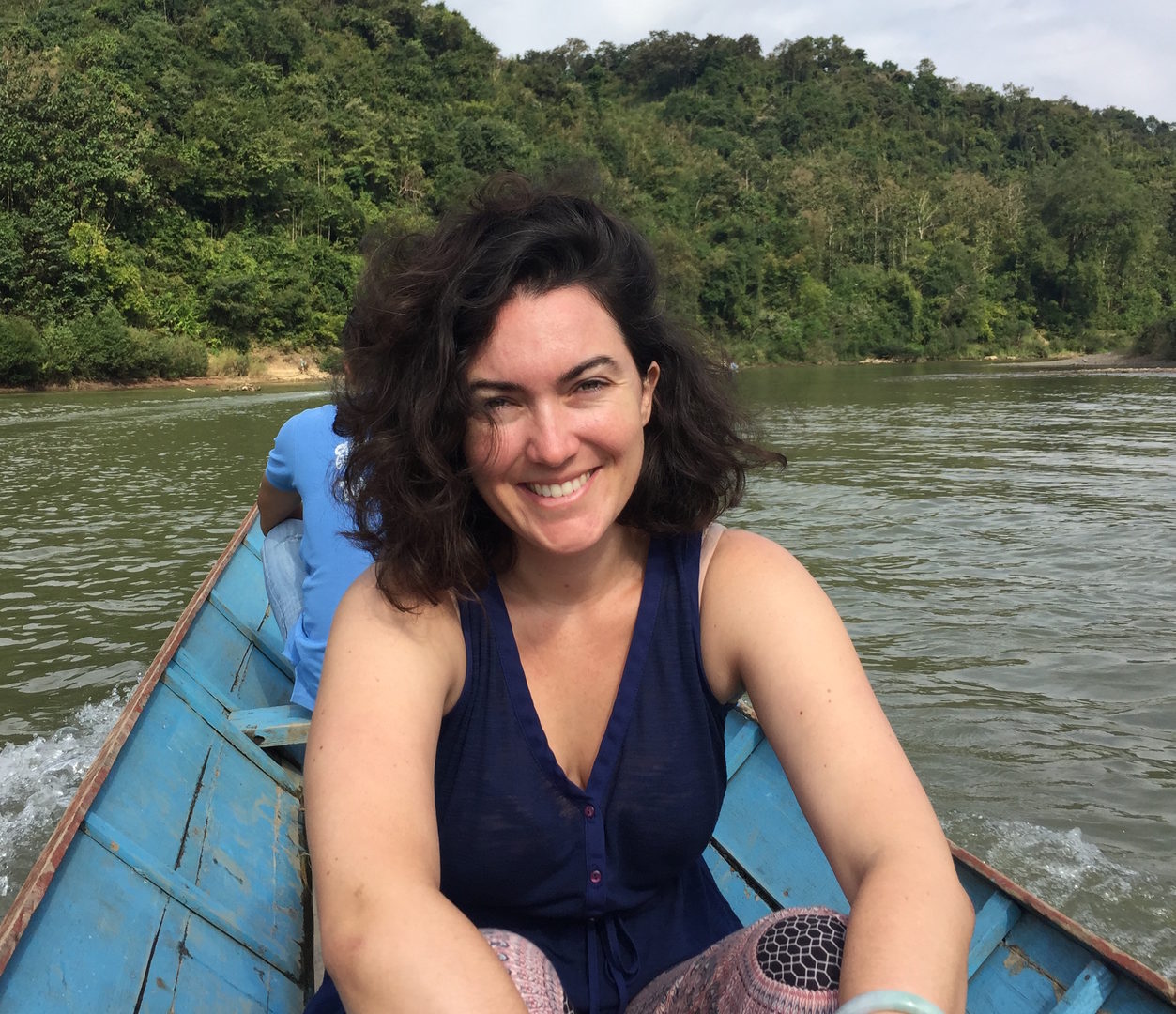 Affiliation:Monash University
Affiliation:Monash University- Position:Postdoctoral Research Fellow
My interests lie in understanding how populations of cells, within and across brain areas, orchestrate their activity to form the basis of perception and action. I did my PhD at New York University with Bijan Pesaran, looking at the neural mechanisms of eye-hand coordination in macaques. I am currently a post doc at Monash University in Melbourne, Australia working with marmoset models of visual perception. My background has been predominately experimental, and I'm looking forward to improving my computation skills.
Tim Herfurth
 Affiliation:Max Planck Institute for Brain Research, Frankfurt, Germany
Affiliation:Max Planck Institute for Brain Research, Frankfurt, Germany- Position:PhD student
I have been a PhD student in theoretical neuroscience for almost two years now. Before I had done my Master's in theoretical physics (condensed matter physics). I am happy to now work in the most exciting field of brain research. So far I have mainly worked in neural coding and information theory.
In my free time I do a lot of sports, like to read and to cook. I am looking forward to meet you all and taste delicious food.
Michal Israelashvili
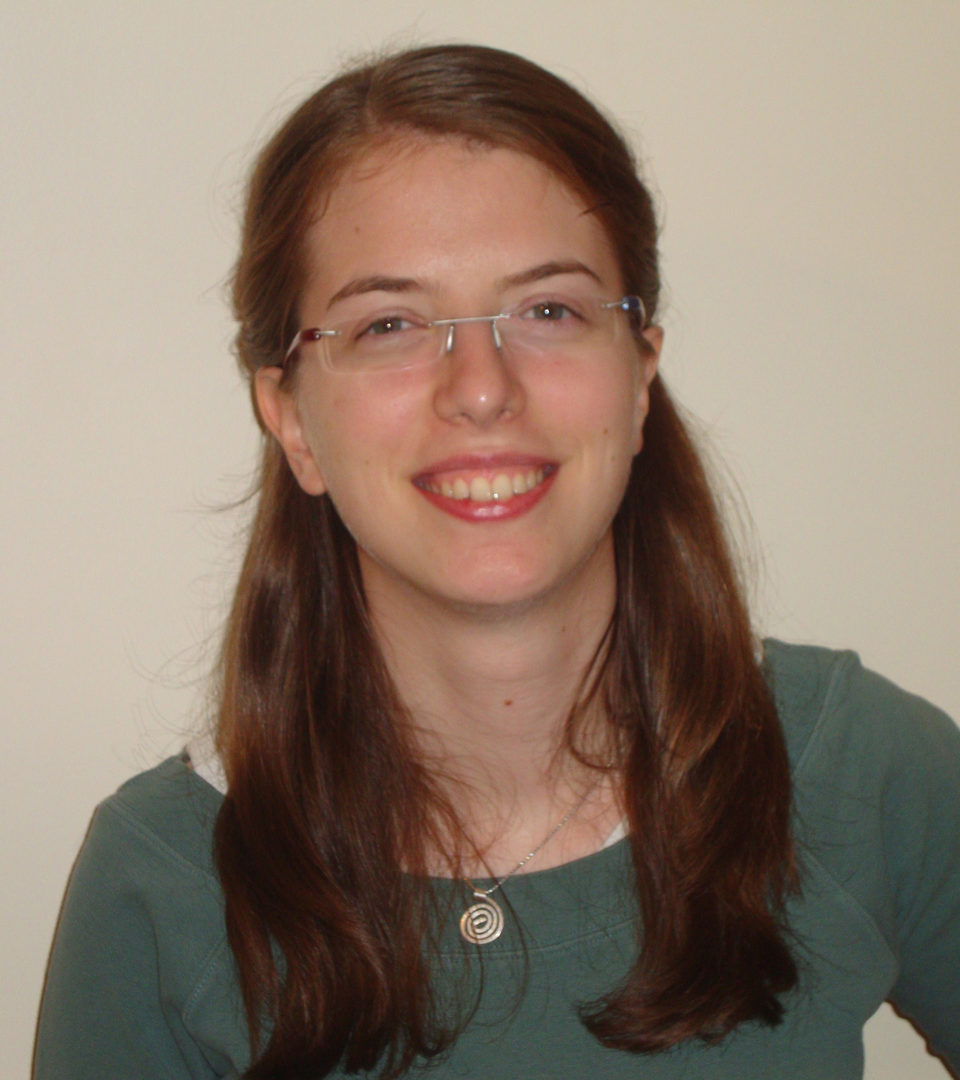 Affiliation:Gonda Multidisciplinary Brain Research Center, Bar-Ilan University
Affiliation:Gonda Multidisciplinary Brain Research Center, Bar-Ilan University- Position:PhD student
I'm a Ph.D. student in the Gonda Multidisciplinary Brain Research Center, at Bar-Ilan University, Israel. My main interest is understanding the neuronal encoding of the cortico-basal ganglia pathway in both normal and pathological states. I'm especially interested in exploring the neural mechanism underlying the temporal properties of tic generation in Tourette syndrome. In my research I combine neurophysiological, behavioral and computational studies. Looking forward to meeting you all in Okinawa!
Takuya Ito
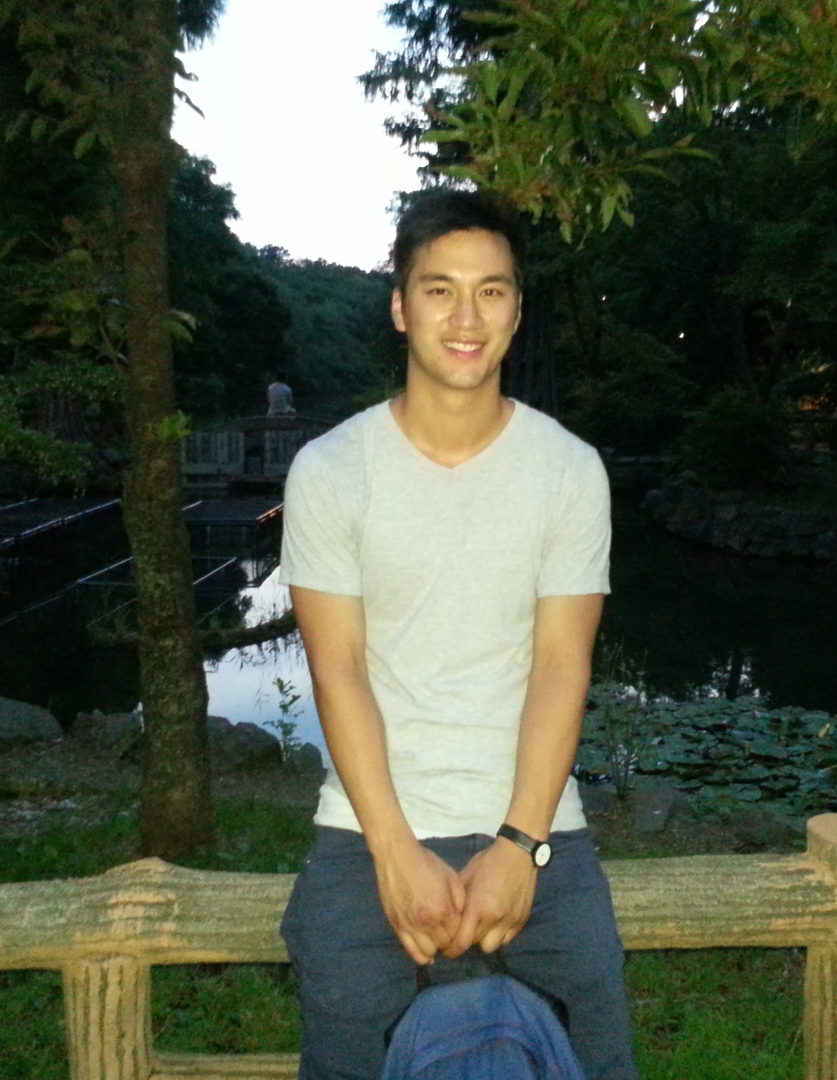 Affiliation:Rutgers University
Affiliation:Rutgers University- Position:PhD Student
I am a PhD student at Rutgers University working in the lab of Dr. Michael Cole. My primary research interests include large-scale brain network organization as it relates to controlled and flexible processing. I am also interested in how mixed-selective neurons arise from low-level neural circuits and their role in flexible task rule representation. Ultimately, I would like to combine these two interests to pursue a multilevel network understanding of the organizational and dynamical principles involved in controlled processing. In my spare time, I enjoy basketball, biking, and hiking.
Elina Jacobs
 Affiliation:UCL
Affiliation:UCL- Position:PhD Student
I am a PhD student on the UCL Wellcome Trust Neuroscience PhD programme and working with Kenneth Harris and Matteo Carandini. I do wide-field imaging of genetically encoded calcium indicators in mice that are performing visual and auditory tasks. My background is in Biological and Biomedical Sciences, and I am using my PhD as an opportunity to learn more about computational methods. Looking forward to meeting everyone in Okinawa!
Kanghoon Jung
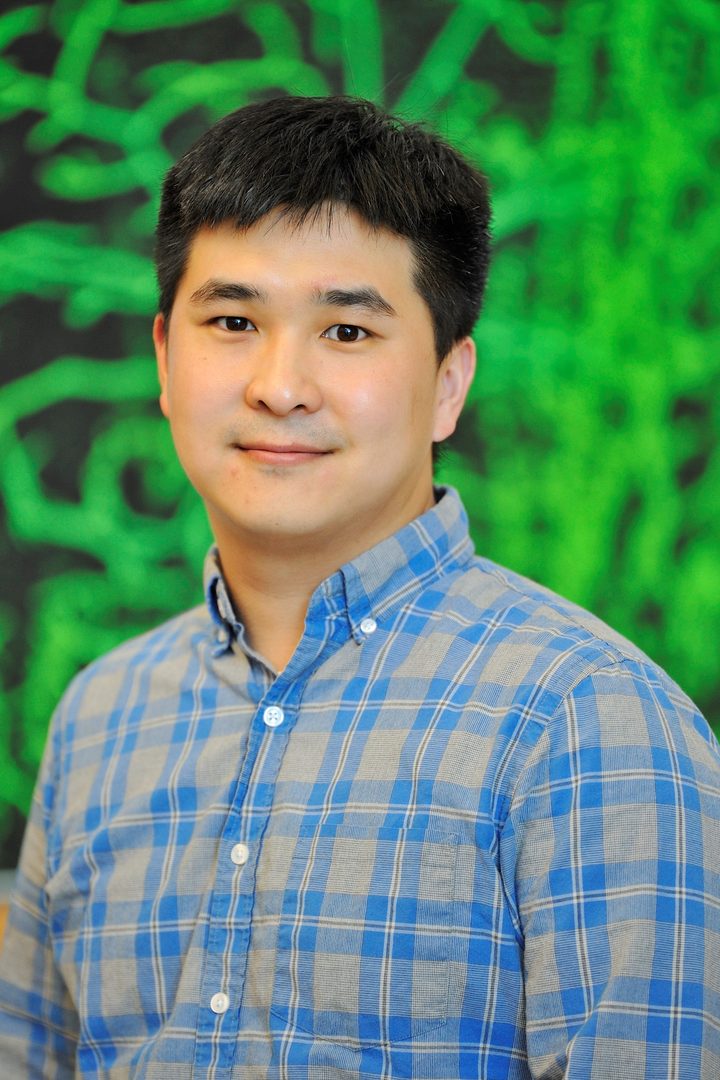 Affiliation:Max Planck Florida Institute for Neuroscience
Affiliation:Max Planck Florida Institute for Neuroscience- Position:Postdoctoral researcher
I am a postdoc in Cellular basis of neural circuit plasticity group at Max Planck Florida Institute for Neuroscience. I am interested in examining how neural circuits generate internal dynamics underlying goal-directed behavior and how states of neural network are regulated by neuromodulation. How reward shapes cortical circuits to direct actions to a goal and which component of the circuits plays a critical role are unknown. I would like to dissect neural circuits with integrated approaches of using in vivo two-photon Ca2+ imaging, optogenetics, and computational modeling. I am looking forward to meeting you all.
Alexandre Kempf
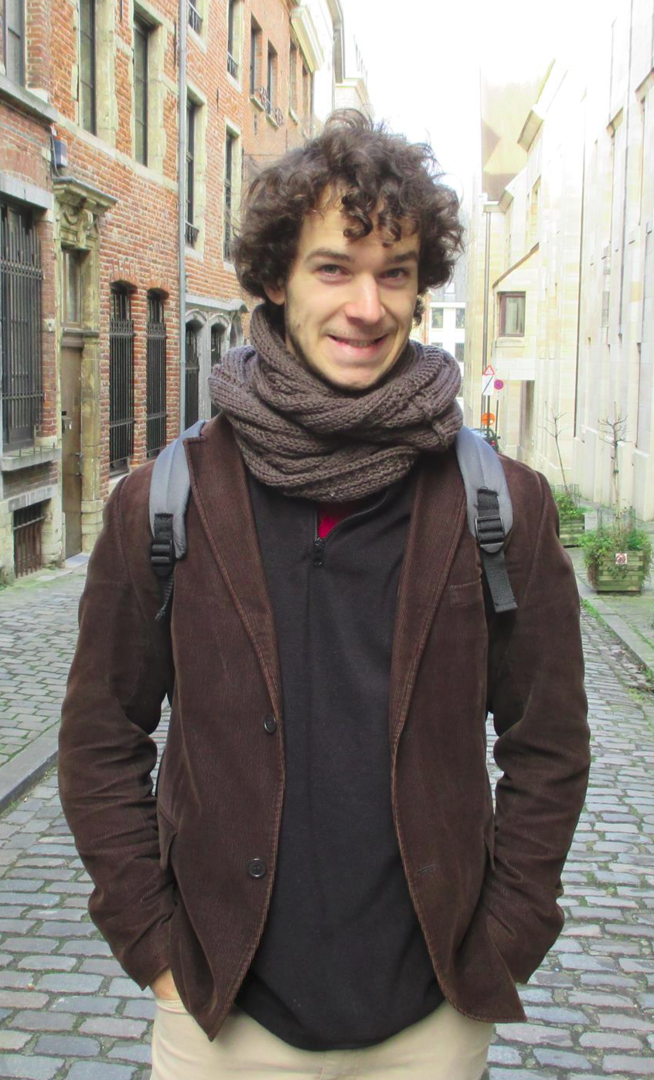 Affiliation:CNRS, UNIC
Affiliation:CNRS, UNIC- Position:PhD student
I'm a french PhD student in Neurosciences in the Bathellier Team (CNRS, Gif-sur-Yvette). We combine experimental neurophysiology, data analysis and modeling to study how multiple senses interact in the brain. More specifically, I work on auditory and visual integration in mice using awake calcium imaging.
I'm fascinated by neurosciences, neural network, computer vision and mathematics.
I'm looking forward to see you in Okinawa ;)
Daniel Kepple
 Affiliation:Cold Spring Harbor Laboratory
Affiliation:Cold Spring Harbor Laboratory- Position:Graduate Student
I am a PhD student under the advisement of Alexei Koulakov at Cold Spring Harbor Laboratory. Broadly, I am interested in applying mathematical methods to biological problems. Specifically, I am interested in what physical features of molecules the sense of smell is selecting, how that information is organized and processed in the brain, and how these features might define human odor percepts.
Carmen Kohl
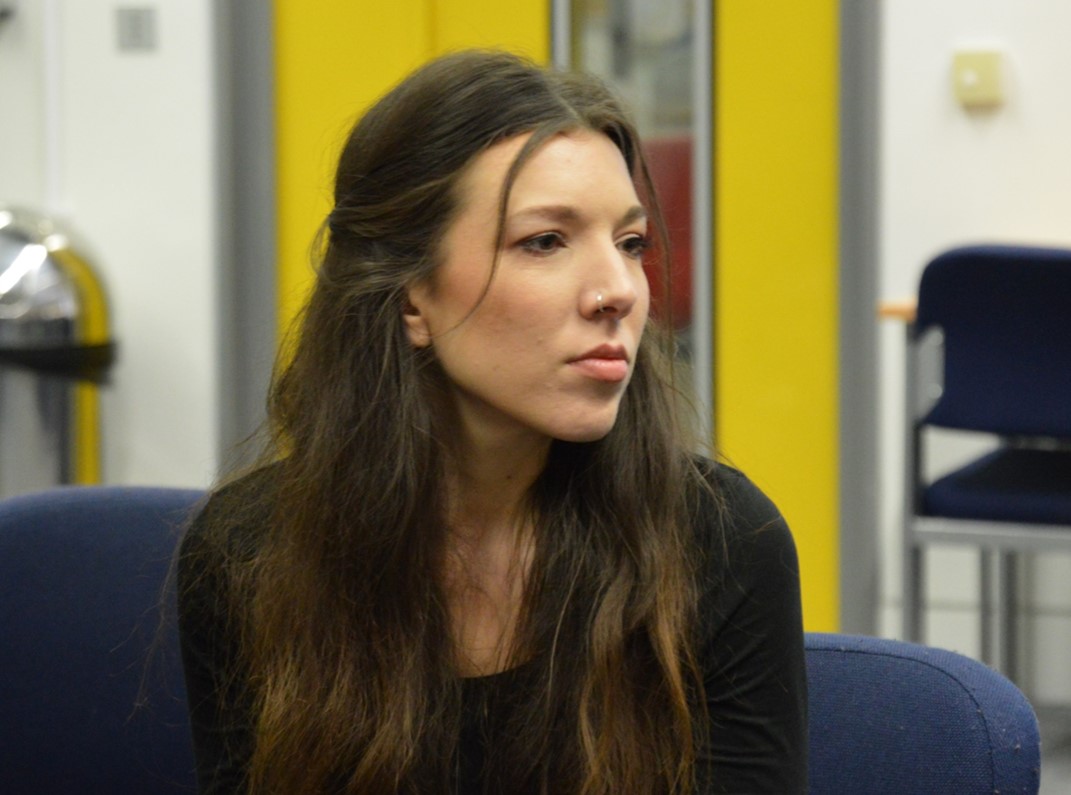 Affiliation:City University London
Affiliation:City University London- Position:PhD Student
I'm a PhD student at the Cognitive Neuroscience Research Unit at City University London. My research aims to explore the neural correlates of evidence accumulation in perceptual decision making, using EEG and TMS. Ultimately, I'm hoping to use these neural signals to evaluate different computational models of decision making.
Anna Kutschireiter
 Affiliation:Institute of Neuroinformatics, UZH ETH
Affiliation:Institute of Neuroinformatics, UZH ETH- Position:PhD Student
I'm a PhD student in the theoretical neuroscience group at the Institute of Neuroinformatics in Zurich. I am truly fascinated by the brain’s ability to represent, process and transform information in a computationally efficient and fast way. Being a theoretical physicist by training, I am trying to tackle the question how neural structures in the brain are able to perform these tasks from a Bayesian perspective. I am looking forward to meeting you all in Okinawa and to having a lot of great chats and discussions.
Yuzhe Li
 Affiliation:Kyoto University
Affiliation:Kyoto University- Position:PhD student
I am a PhD student at the Graduate School of Biostudies, Kyoto University. My current research focusses at mathematical modeling of learning and memory. I am also interested on neural data analysis. I am excited about the possibility of attending the OCNC summer school. I look forward to the chance of meeting experts in the field and hearing about the field from their point of view.
Dominika Lyzwa
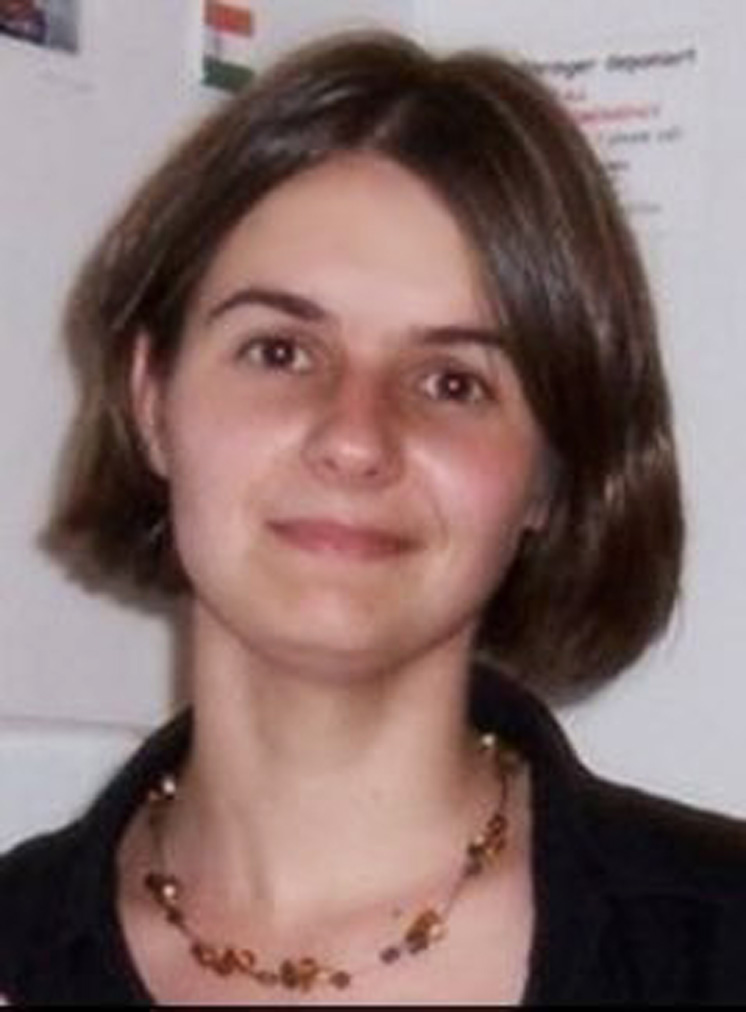 Affiliation:Max Planck Institute for Dynamics and Self-Organization
Affiliation:Max Planck Institute for Dynamics and Self-Organization- Position:PostDoc
I have worked on the neural representation of complex sounds in the auditory midbrain and cortex, modelling neural spiking responses to novel acoustic stimuli. In my project at OIST I would like to simulate electric (magnetic) fields of neural networks with the aim to advance optical imaging of neural circuits using nanoprobes. I am looking forward very much to meeting and working with you in Okinawa!
Yoshihiro Nagano
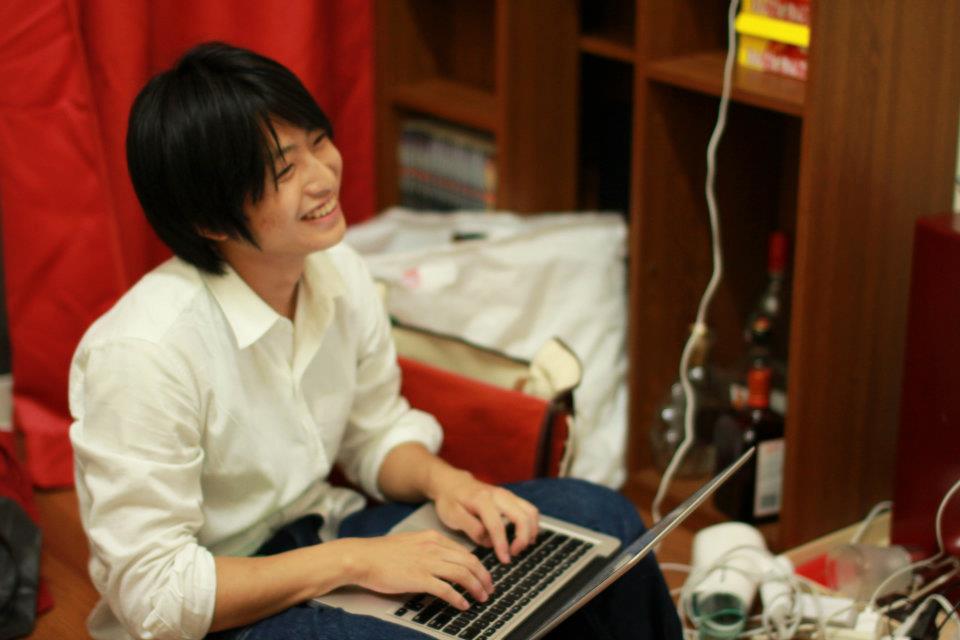 Affiliation:Graduate School of Frontier Sciences, The University of Tokyo
Affiliation:Graduate School of Frontier Sciences, The University of Tokyo- Position:Graduate student
I am a graduate student working on neural network simulations. My current research interest is a flexibility of neural computation. Our perception is strongly modulated by the context of external world and own internal state. I would like to clarify the mechanism and significance of this processing strategy. I have a background in computer science, computational neuroscience, and machine learning. I am looking forward to meeting you all!
Dinesh Natesan
 Affiliation:KTH Royal Institute of Technology, Stockholm & National Centre for Biological Sciences, Bangalore
Affiliation:KTH Royal Institute of Technology, Stockholm & National Centre for Biological Sciences, Bangalore- Position:PhD Student
I am a joint PhD student between KTH, Stockholm and NCBS, Bangalore. I began my journey into neuroscience as a freshly graduated electronics engineer keen on understanding the biological world using skills learnt as an engineer. I currently study the neural basis of antennal positioning in insects. Antennal position, as it turns out, is dynamically computed by integrating information from multiple sensory inputs. I perform behavioral and electrophysiological experiments to understand the neural basis of this dynamic computation. Broadly, I am interested in how insects, with such a small brain, are able to perform incredibly complex behaviors (including complex context learning). I am looking forward to the Okinawa summer school to learn computational neuroscience and to broaden my horizons.
Alejandro Pan Vazquez
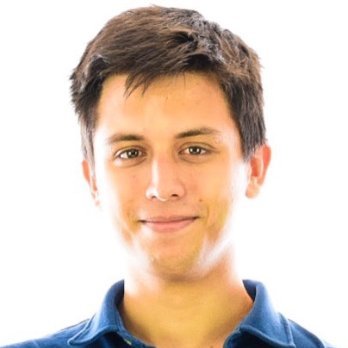 Affiliation:King's College London
Affiliation:King's College London- Position:PhD Student
I am a first year PhD student at Juan Burrone's lab in King's College London where we study the development of functional neuronal networks. I am currently researching the integration of chandelier cells into cortical networks using a combination of molecular biology, electrophysiology and imaging techniques. I would like to develop my computational neuroscience skills at OCNC and start incorporating more computational aspects into my research. Looking forward to meeting you all!
Indrajith R Nair
 Affiliation:National Brain Research Centre, India
Affiliation:National Brain Research Centre, India- Position:PhD Student
I am a PhD student at National Brain Research Centre, India. My research is focused on understanding the neural systems interaction in memory and decision making. I use multi tetrode technique in behaving rodents for my experimental work. I am looking forward to meeting you all on Okinawa!!
Sergii Romanenko
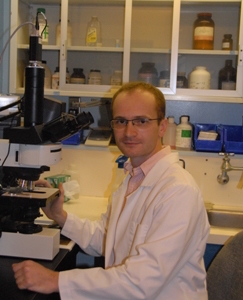 Affiliation:University of Western Australia
Affiliation:University of Western Australia- Position:PostDoc
I am a Postdoctoral researcher in neuroscience and biophysics. I am mainly an experimentalist and expect to promote the area of my expertise with this course as well as use new skills to process the data and give it a good reasonable interpretation. I was working with both vertebrate and invertebrate experimental models, in vitro and in situ. The area of my interest and research is the search for electroceuticals aimed to treat some neurological disorders such as chronic pain and epilepsy.
Pia Rose
 Affiliation:Institute for Theoretical Biology, Humboldt University Berlin
Affiliation:Institute for Theoretical Biology, Humboldt University Berlin- Position:PhD-Student
I am a first year PhD-student in the computational neurophysiology group of Susanne Schreiber.
In the moment, I am working on a model for the temperature effects on the mutated sodium channel kinetics of various pain syndromes. I have a background in Biophysics and theoretical Chronobiology.
I am looking forward to meeting you all in Okinawa!
Brandy Schmidt
 Affiliation:University of Minnesota
Affiliation:University of Minnesota- Position:Post-doc
I am currently a post-doc in the Redish lab at the University of Minnesota examining how disparate neural systems interact during deliberative decision-making. We combine chemo-genetic manipulations with in vivo multi-site tetrode recordings in behaving rodents. I am exciting to strengthen my computational neuroscience background.
Nishal Shah
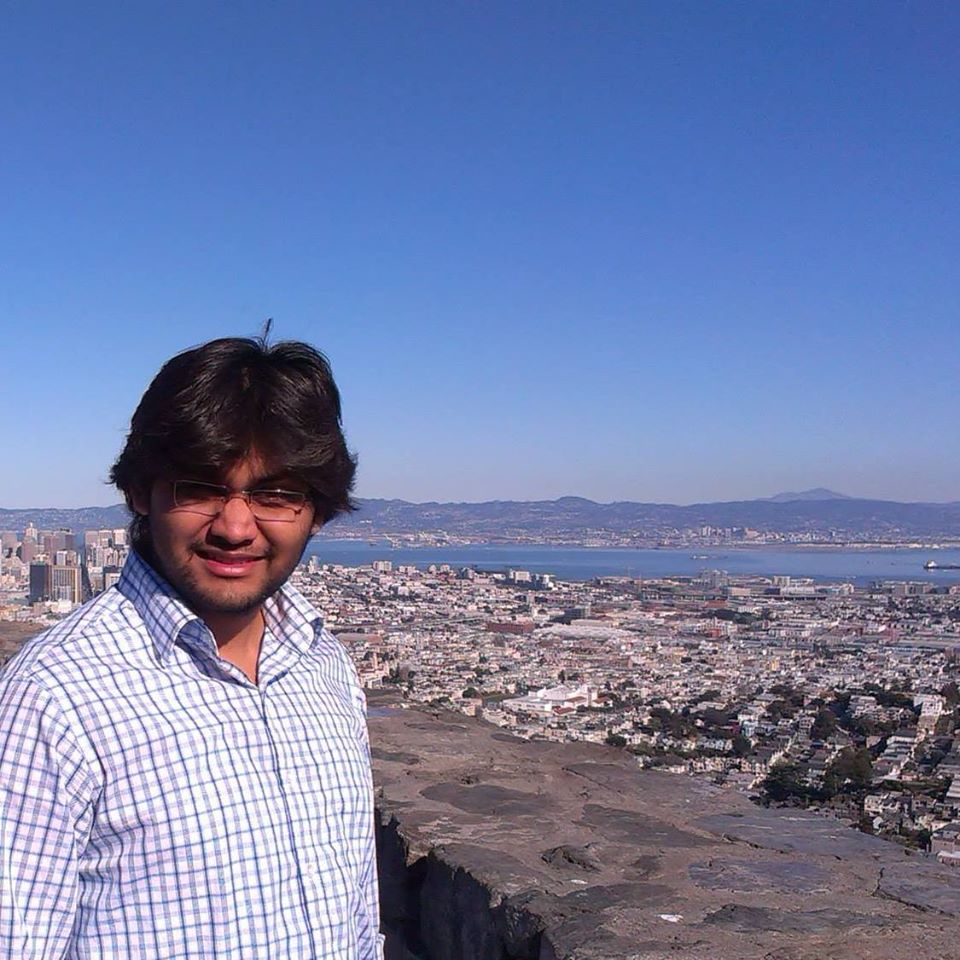 Affiliation:Stanford University
Affiliation:Stanford University- Position:Graduate Student
Hi!
I am a PhD student at Stanford working on retina in Prof. EJ Chichilnisky's lab. I am trying to develop experimental and computational methods to identify spatial non-linearities in the Retinal Ganglion Cells, the output cells of the retina. This will further impact how retina encodes information about natural world, like edges and textures. I hope to meet everyone at the summer school and learn a lot!
Gregory Telian
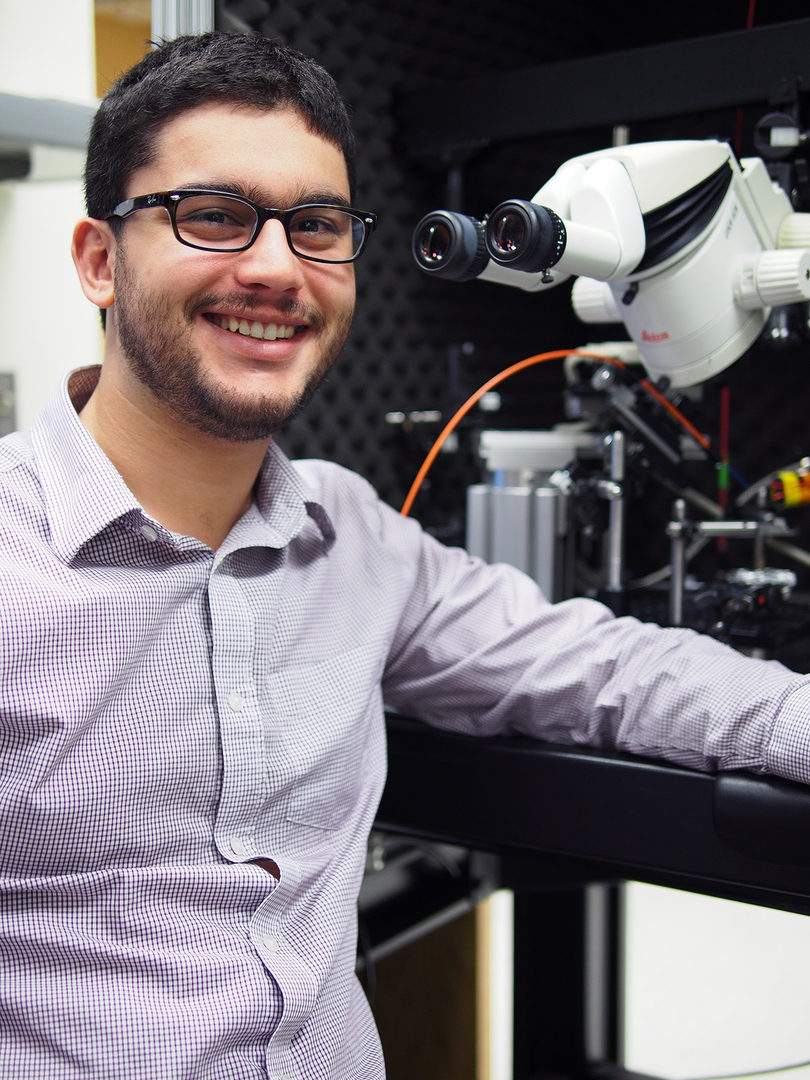 Affiliation:University of California Berkeley
Affiliation:University of California Berkeley- Position:PhD Graduate Student
I am a PhD neuroscience graduate student at the University of California Berkeley. I work in the Adesnik lab where I study sensory and motor representations in the mouse whisker system. Using multiple high density silicon electrodes, optogenetics, and high speed imaging in awake behaving mice I record spiking activity from various regions in the sensorimotor loop.The goal of this project is to better understand how these reciprocally connected brain regions represent and transform incoming sensory information to behavioral output. I've recently begun using more computational approaches to explore these rich datasets. At OCNC, I would like to learn about neural modeling methods that may provide insights into the circuit mechanisms that give rise to these representations.
Arturo Torres Herráez
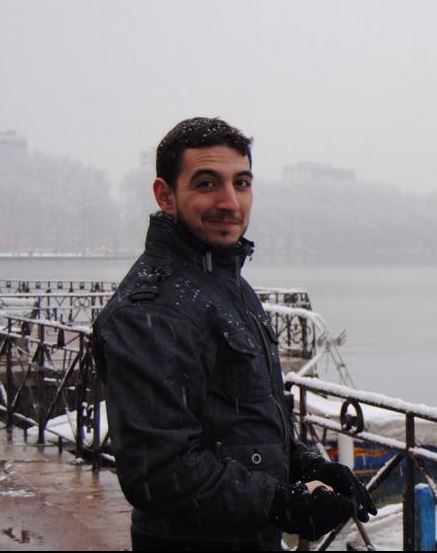 Affiliation:Neuroscience Paris Seine, IBPS-UPMC, Paris, France
Affiliation:Neuroscience Paris Seine, IBPS-UPMC, Paris, France - Position:PhD student
I'm a PhD student of the Ecole des Neurosciences Paris (ENP) graduate program. I work in the Cerebellum, Navigation and Memory team of Dr. Laure Rondi-Reig in Paris where I am interested in understand the role of the cerebellum as a potential component of the navigation system of the brain. I am focus in the electrophysiological characterization of the interaction of the hippocampus and the cerebellum in behaving mice performing spatial navigation task.
Lina Tran
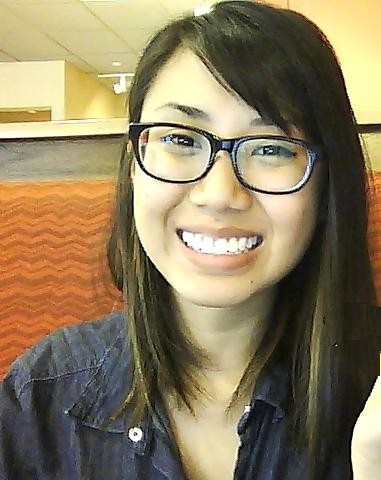 Affiliation:University of Toronto
Affiliation:University of Toronto- Position:Graduate Student
I am a PhD student at the University of Toronto studying the neural basis of learning and memory. My current project involves a combination of behavioural and computational methods to assess the validity of complex network analyses of memory networks in the brain. On a finer scale of resolution, I am also interested in how neurogenesis influences remodelling of neuronal memory circuits using computational models.
Alexandra Tran-Van-Minh
 Affiliation:Institut Pasteur
Affiliation:Institut Pasteur- Position:post-doc
I am interested in neuronal computations at the single cell and circuit level. During my postdoc in the lab of Dr David DiGregorio at the Institut Pasteur, I do experimental and modeling work to study the dendritic properties of cerebellar interneurons, and their role for synaptic integration and plasticity.
Pei Zhang
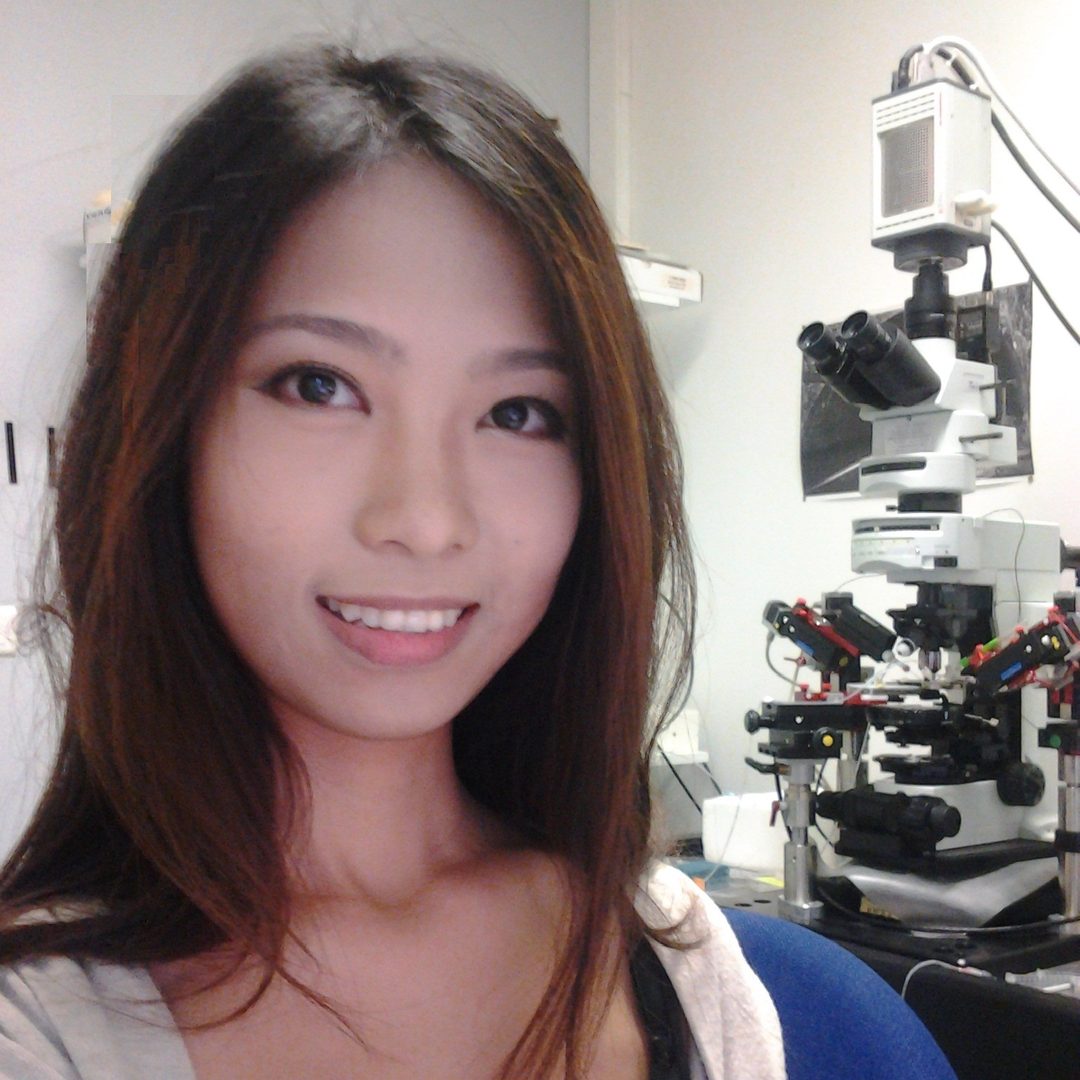 Affiliation:France CNRS/IINS UMR5297
Affiliation:France CNRS/IINS UMR5297- Position:PhD student
I am a third year PhD student in France (CNRS) and Germany (DZNE). My background is medicine and neuroscience (direction: electrophysiology and epigenetics). Now my new interest is to apply computational methods on neurodegenerative diseases modeling and prediction. I’m very glad that OIST Graduate University gave me this great opportunity to attend OCNC2016, and looking forward to meeting you all in Okinawa!



